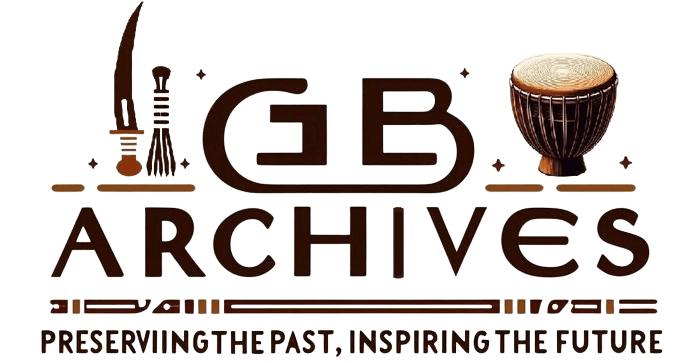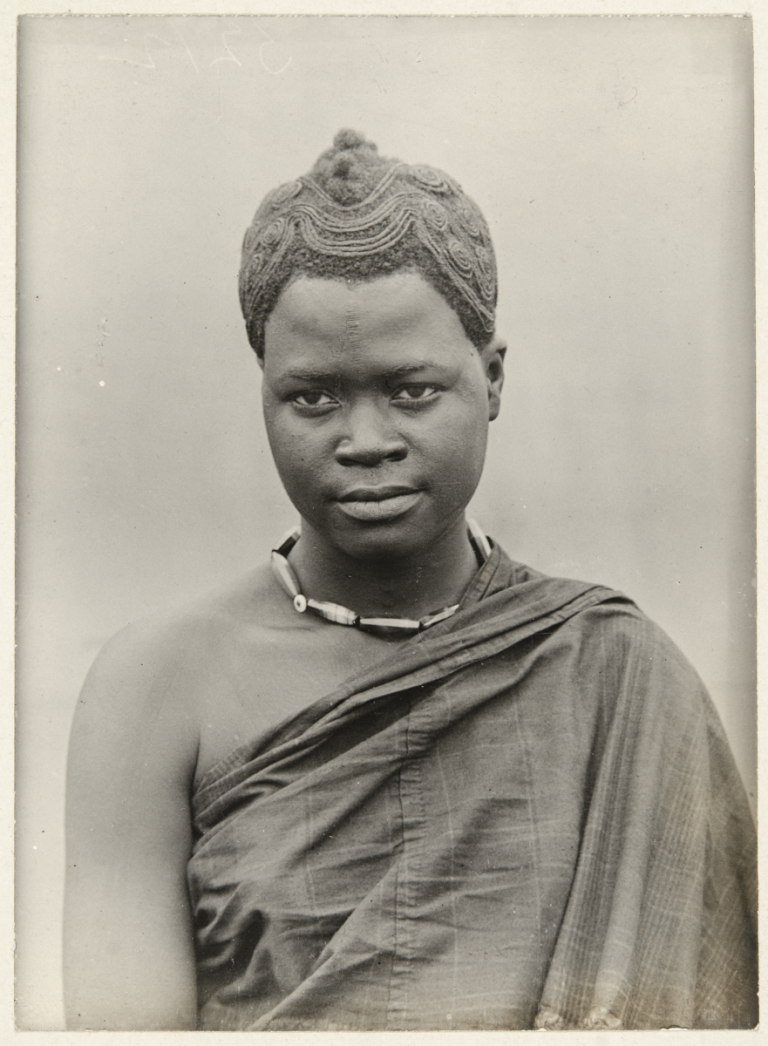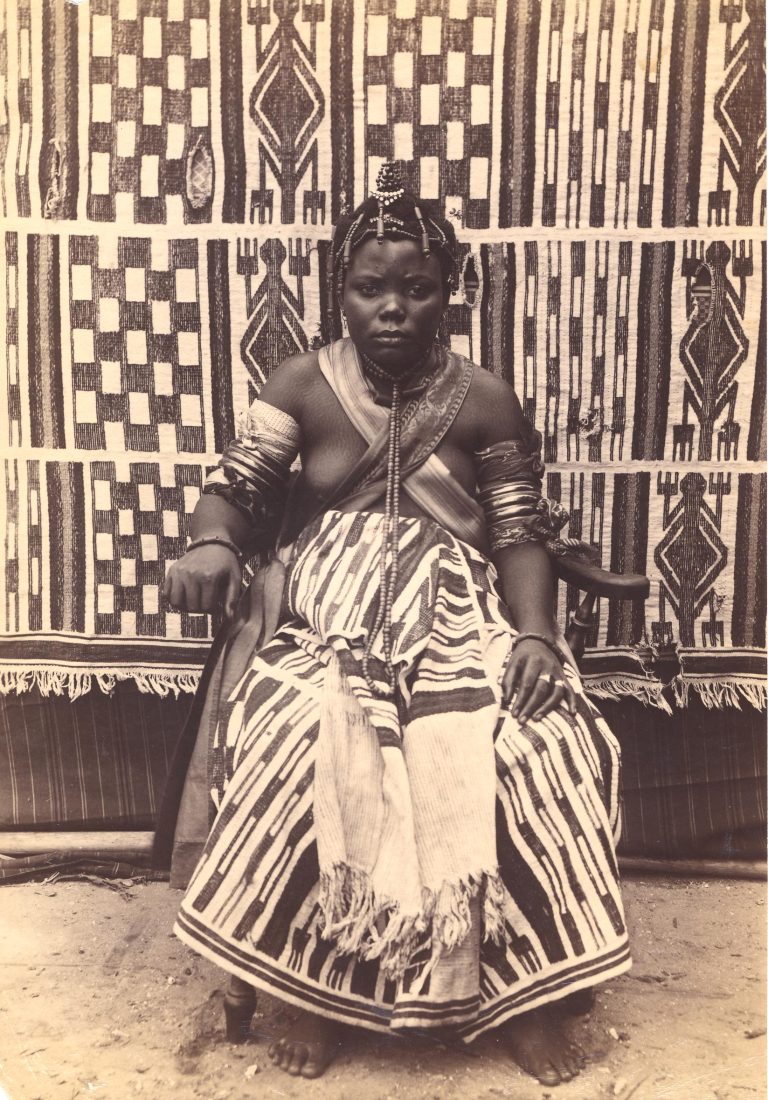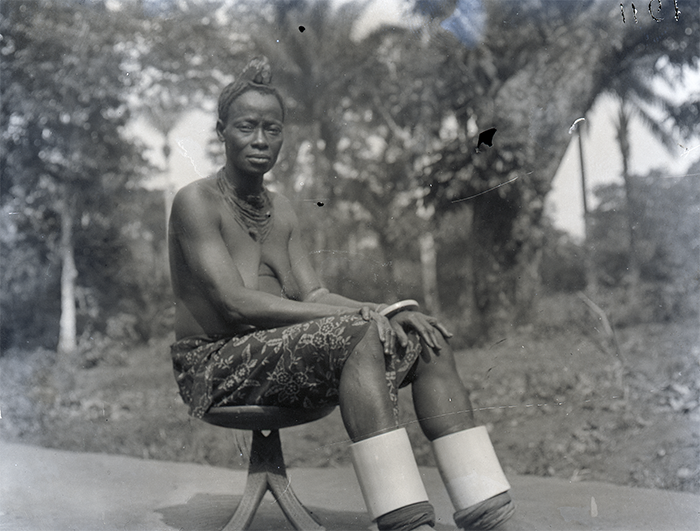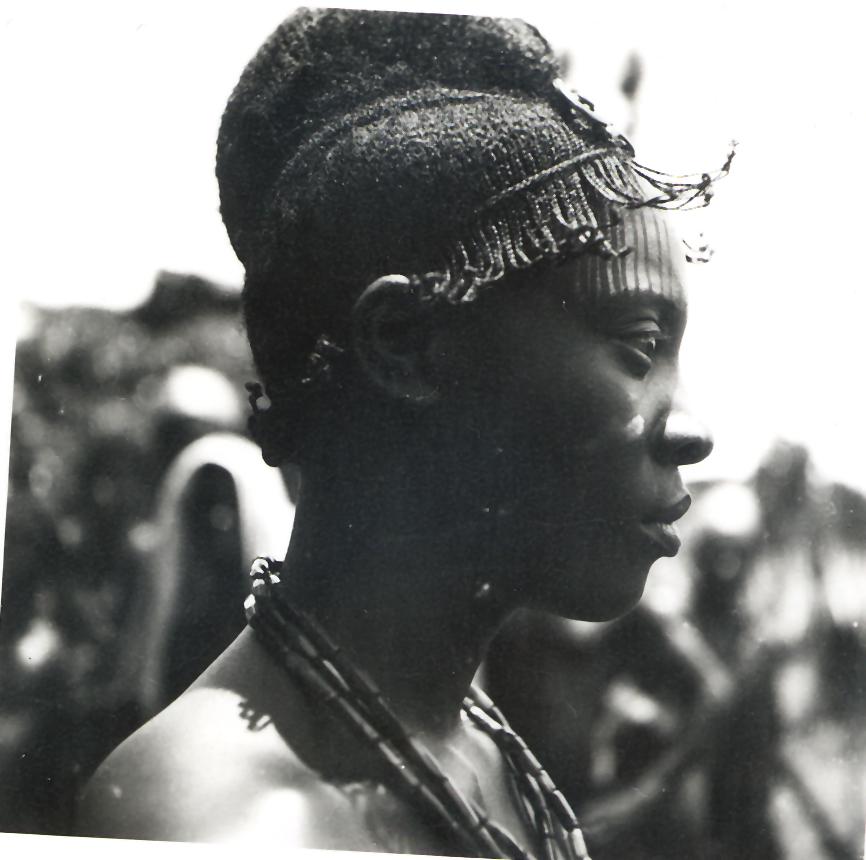
This black-and-white photograph showcases a profile view of a young Igbo man with a domed, plaited hairstyle adorned with beads. His neck is decorated with a traditional bead necklace, reflecting the cultural emphasis on personal adornment in Igbo society. The image, a gelatin silver print taken between 1880 and 1939, captures both the artistic and cultural significance of these features.
The photograph above offers an important glimpse into the traditional values of the Igbo people, where personal adornment carried deep significance. The young man’s hairstyle, with its domed and plaited design enhanced by beads or shells, is more than just an aesthetic choice. Hairstyles in Igbo society were often symbols of identity, reflecting the wearer’s status, achievements, and role within the community. They could also be linked to specific ceremonies or rituals, marking important life events.
Cultural Significance of Hairstyles and Adornments
In the Igbo community, hairstyles like the one seen in this image were central to the way individuals presented themselves. The elaborate designs represented various social attributes and were commonly worn during special occasions, community gatherings, or rites of passage. These hairstyles were a way of expressing one’s place within the community, and the dedication involved in creating them showcased an appreciation for beauty and tradition.
Similarly, the beads worn around the man’s neck were more than decorative. Beads in Igbo culture often symbolized wealth, authority, and ancestral connections. Those with high social standing would wear these adornments as a reflection of their achievements or societal position. Beads were also handed down through generations, serving as a tangible connection to one’s lineage.
The Photograph as a Cultural Artifact
This photograph, preserved by the British Museum, offers more than a simple portrait—it serves as a historical record of Igbo traditions before significant changes brought about by colonial influences. The gelatin silver print process used to create this image was widely used at the time, further embedding the image in its historical context. The photograph captures a moment when Igbo traditions and personal adornments played a vital role in defining social identity and cultural practices.
Continuing Legacy of Igbo Traditions
Many of the adornments seen in this image continue to play an important role in modern Igbo culture. Beads, for example, remain significant during traditional weddings, where they symbolize beauty, wealth, and cultural heritage. Similarly, hairstyles inspired by traditional designs have seen a revival, becoming a modern expression of cultural pride and a celebration of indigenous artistry.
This photograph is a valuable link between the past and present, showing that the cultural practices of personal adornment continue to thrive in today’s Igbo society. By preserving and sharing these images, we keep alive the rich heritage of the Igbo people, ensuring that our cultural expressions are remembered and celebrated for future generations.
Explore Further
To explore more about the traditions surrounding Igbo adornments and their modern-day relevance, read our post on Igbo Women, Hairstyles, and Cultural Heritage.
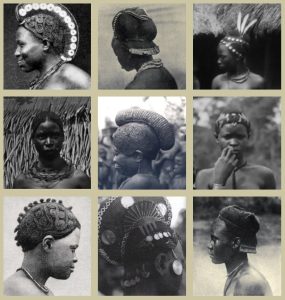 Fashion Insights
Fashion InsightsIgbo women’s hairstyles have long been a symbol of cultural identity, artistry, and social status. These hairstyles, which have evolved over centuries, are not merely about aesthetics but also about conveying deeper cultural meanings. This post explores the historical significance, materials and techniques, cultural context, and modern relevance of Igbo women’s hairstyles, showcasing their rich […]
Discover more from Igbo Archives
Subscribe to get the latest posts sent to your email.

